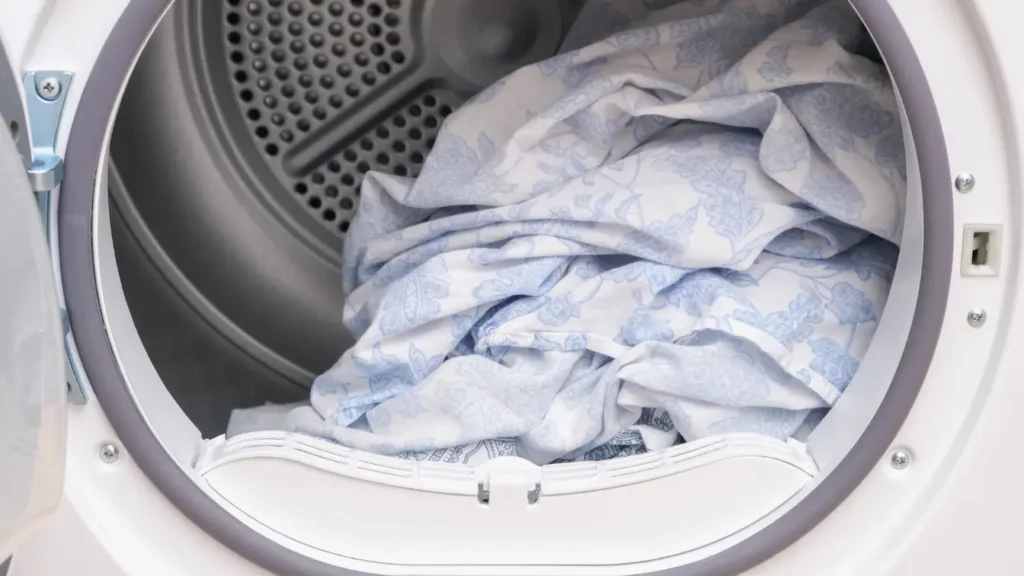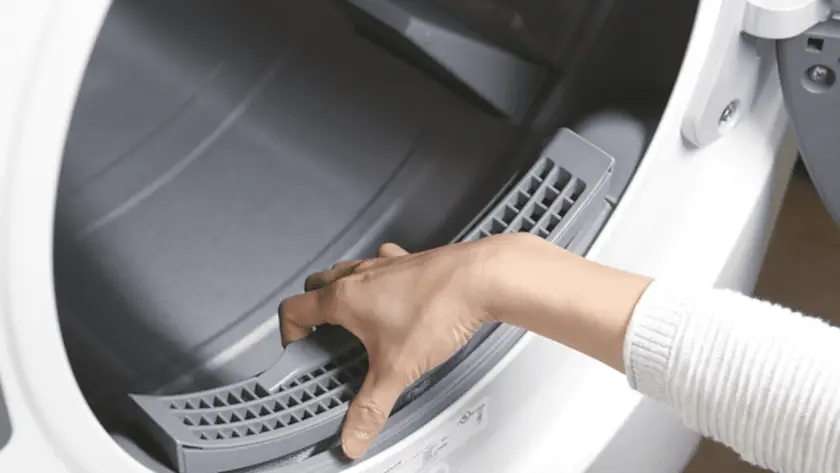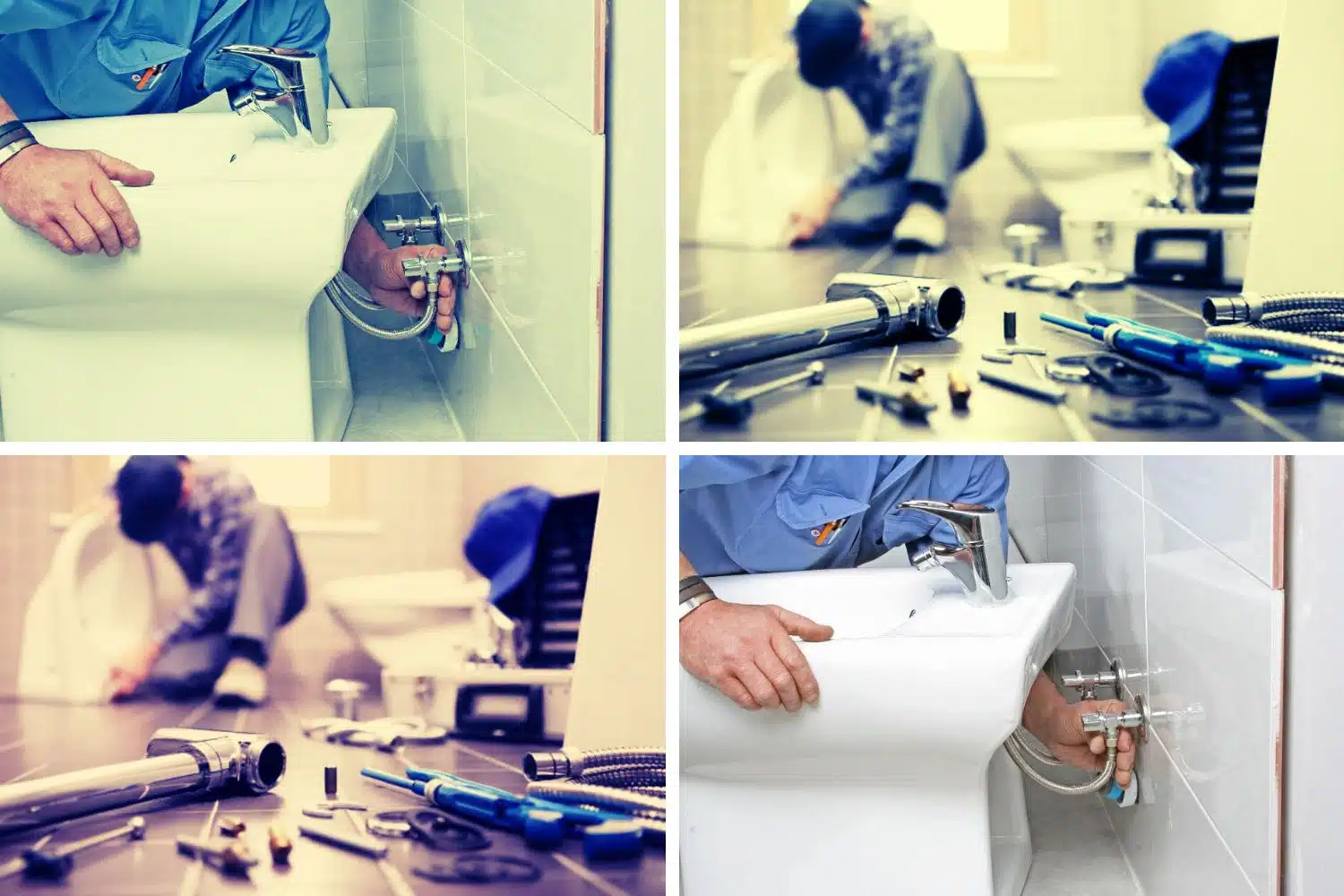Is your LG dryer not heating up as it should? If so, you’re not alone. Many LG dryer owners encounter this common issue, which can stem from various factors ranging from faulty heating elements to clogged vents.
Key Points:
- Faulty heating elements, thermostats, thermal fuses, gas valve coils, and clogged vents/ducts are common causes of an LG dryer not heating.
- Troubleshooting and fixing an LG dryer involves checking the power supply, cleaning the lint filter/vent, and inspecting/replacing faulty components like the heating element, thermostat, thermal fuse, gas valve coils, and igniter.
- To prevent an LG dryer from not heating, regularly clean the lint filter and vent, avoid overloading the dryer, and schedule regular maintenance checks.
This comprehensive guide will delve into the most prevalent causes of an LG dryer not heating and provide practical troubleshooting tips to help you resolve the problem. Additionally, we’ll share essential preventive measures to safeguard your dryer’s performance in the future.
Let’s dive in and return your LG dryer to its efficient heating ways!
Common Causes of an LG Dryer Not Heating

When your LG dryer isn’t generating heat, it’s essential to understand the potential culprits behind the issue. Here are the primary components that could be at fault:
1. Heating Element
A malfunctioning heating element is a frequent cause of heat deficiency in LG dryers. If your dryer tumbles but fails to produce heat, the heating element may require replacement to restore proper functionality.
2. Thermostat
Responsible for regulating the dryer’s temperature, a faulty thermostat can lead to inadequate heating or inconsistent temperatures. Inspecting and potentially replacing the thermostat is recommended if you notice temperature irregularities or a complete lack of heat.
3. Thermal Fuse
As a safety mechanism, the thermal fuse interrupts the dryer’s heating process if the temperature rises to hazardous levels. If the thermal fuse blows, your dryer won’t heat, necessitating its replacement for continued operation.
4. Gas Valve Coils
In gas dryers, defective gas valve coils can hinder gas flow to the burner, producing insufficient heat. Replacing these faulty coils is crucial to restoring proper heating functionality.
5. Vent or Duct Blockages
Restricted airflow due to vent or duct blockages can lead to overheating and ultimately cause the dryer not to heat. Regularly cleaning the vents and ducts is essential for preventing blockages and ensuring efficient heating.
6. Igniter
If the igniter fails to ignite the gas within the burner, your dryer won’t generate heat. Replacing the faulty igniter is necessary to restore proper heating performance.
By identifying these common causes, you can troubleshoot effectively and address the underlying issues affecting your LG dryer's heating capabilities.
Addressing and Fixing the Common Causes

Let’s delve deeper into each common cause of an LG dryer not heating and explore the necessary steps to resolve the issue:
1. Faulty Heating Element
A malfunctioning heating element can significantly impact your LG dryer’s drying efficiency. Symptoms such as damp laundry despite the dryer tumbling indicate a faulty heating element. To rectify this issue, follow these steps:
- Identify the Heating Element: Locate the heating element within your LG dryer.
- Replace the Heating Element: Safely disconnect the dryer from the power source and follow the manufacturer’s guidelines to replace the heating element.
2. Broken Thermostat
A broken thermostat can disrupt your LG dryer’s temperature control system, leading to inadequate heating. If you suspect a faulty thermostat, consider the following actions:
- Test the Thermostat: Use a multimeter to test the thermostat for continuity and functionality.
- Replace the Thermostat: If the thermostat is defective, replace it to restore proper temperature regulation.
3. Malfunctioning Thermal Fuse
A malfunctioning thermal fuse poses safety risks and can impede your LG dryer’s heating process. To address this issue, follow these steps:
- Diagnose the Thermal Fuse: Using a multimeter, test the thermal fuse for continuity.
- Replace the Thermal Fuse: If the thermal fuse is blown, replace it to ensure safe and efficient operation.
4. Defective Gas Valve Coils
Defective valve coils can hinder proper gas flow in LG dryers, leading to heating issues. Here’s how to resolve this problem:
- Inspect the Gas Valve Coils: Identify any visible signs of damage or wear on the gas valve coils.
- Replace the Gas Valve Coils: If the coils are defective, replace them to restore efficient gas flow and heating.
5. Clogged Vent or Duct
Restricted airflow due to vent or duct blockages can prevent your LG dryer from heating properly. To mitigate this issue, take the following steps:
- Clean the Vent and Duct: Use a vent brush or vacuum attachment to remove lint and debris from the vent and duct.
- Prevent Future Blockages: Regularly clean the vent and duct to ensure proper airflow and prevent blockages.
6. Faulty Igniter
A faulty igniter can prevent the gas valve from opening, resulting in a lack of heat in your LG dryer. To address this issue, consider the following steps:
- Test the Igniter: Use a multimeter to test the igniter for continuity and functionality.
- Replace the Igniter: If it is defective, replace it to ensure proper gas ignition and heat generation.
By addressing these common causes and following the recommended steps, you can troubleshoot and resolve issues about your LG dryer not heating effectively.
Tips for Preventing Heating Issues
Prevention is key to maintaining your LG dryer’s optimal performance and longevity. Here are some essential tips to prevent heating issues in your LG dryer:
1. Regularly Clean the Lint Filter and Vent
- Before and After Each Use: Clean the lint filter to prevent blockages and ensure efficient airflow.
- Periodically: Clean the vent and duct to remove lint and debris and prevent blockages.
2. Avoid Overloading the Dryer
Follow the manufacturer’s guidelines for load capacity to prevent strain on the heating system and ensure proper airflow.
3. Schedule Regular Maintenance Checks:
Arrange for professional maintenance checks to detect and address any underlying issues before they escalate.
Implementing these preventive measures can prolong your LG dryer's lifespan and maintain its efficient heating performance.
Conclusion
An LG dryer not heating can be frustrating, but with the right troubleshooting steps and preventive measures, you can resolve the problem effectively. You can restore your LG dryer’s heating functionality by identifying common causes, such as a faulty heating element, thermostat, or thermal fuse, and taking appropriate actions.
Additionally, implementing preventive measures such as regular cleaning and maintenance checks can help prevent heating issues in the future, ensuring optimal performance and longevity for your appliance. Remember, proper maintenance and timely repairs are essential for running your LG dryer smoothly and efficiently.
Related: Fixing Washing Machine Problems
Frequently Asked Questions
Various factors, including a faulty heating element, thermostat, or thermal fuse, could be causing your LG dryer not to heat up.
Start by checking the power supply and ensuring it’s plugged in properly. Then, clean the lint filter and vent to remove any blockages. If the issue persists, consider inspecting and potentially replacing components such as the heating element, thermostat, or thermal fuse.
While replacing the heating element yourself is possible, seeking professional help is recommended to ensure it’s done safely and correctly.
The thermal fuse is a safety device that prevents overheating by interrupting the dryer’s heating process when the temperature reaches unsafe levels.
It’s recommended to clean the lint filter before and after each use to ensure proper airflow and prevent potential fire hazards.
If troubleshooting steps don’t resolve the issue, it’s best to contact a professional repair service to diagnose and fix it.






